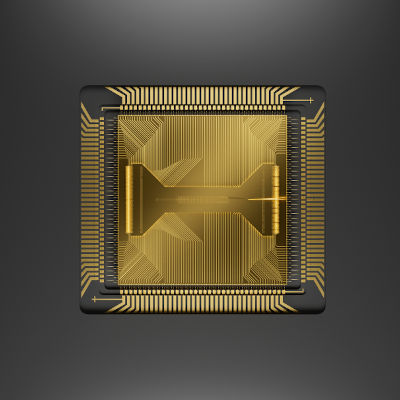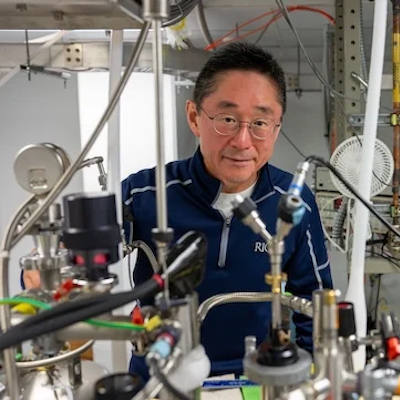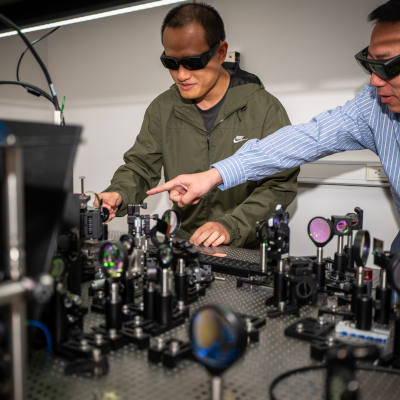Quantum simulator for electrons and electromagnetic fields in materials
Nov. 01, 2024.
2 mins. read.
3 Interactions
MIT researchers have built a quantum processor for simulations that reproduce the behavior of electrons in materials.
MIT researchers have found ways to generate synthetic electromagnetic fields on superconducting quantum processors. This opens the way to better methods to simulate how electrons move in materials.
The researchers generated a synthetic magnetic field inside a quantum processor comprising 16 qubits. The synthetic magnetic field lives inside a computation, and is not “real.” However, it acts like a magnetic field would in nature.
The synthetic magnetic field allows the researchers to study how electrons would behave if there was an actual magnetic field. This is important because electrons in materials can move in unique ways when influenced by magnetic fields. The response of electrons to magnetic fields can change how materials conduct electricity or turn into different states, like from metal to insulator.
By controlling how the qubits interact with each other, the researchers can simulate how electrons jump from one atom to another in a material. They can tweak the energy levels of the qubits, how the qubits talk to each other, and the frequencies of microwaves used to control the qubits.
The researchers described the methods and results of this study in a paper published in Nature Physics.
Better simulations of material physics
The quantum processor is not a large-scale quantum computer but a smaller system designed to mimic the behavior of electrons in materials.
The researchers found that the behavior of the qubits mimicked the basic rules of electromagnetism, confirming that the simulated synthetic magnetic field works like a real magnetic field.
A better understanding of the behavior of electrons in materials can lead to finding new materials for making electronics that work faster or with less energy. Electronics like computers or phones could become much more efficient if we learn how to control materials at this microscopic level.
This research work shows that small quantum simulators can be very effective for studying material properties in a controlled way. It helps explore new possibilities in material science, potentially leading to breakthroughs in electronics and energy technology.
“Our work enables us to simulate much more of the rich physics that has captivated materials scientists,” says researcher Ilan Rosen in a MIT press release. “We are in a very exciting place for the future.”
Let us know your thoughts! Sign up for a Mindplex account now, join our Telegram, or follow us on Twitter.


.png)

.png)


.png)







0 Comments
0 thoughts on “Quantum simulator for electrons and electromagnetic fields in materials”